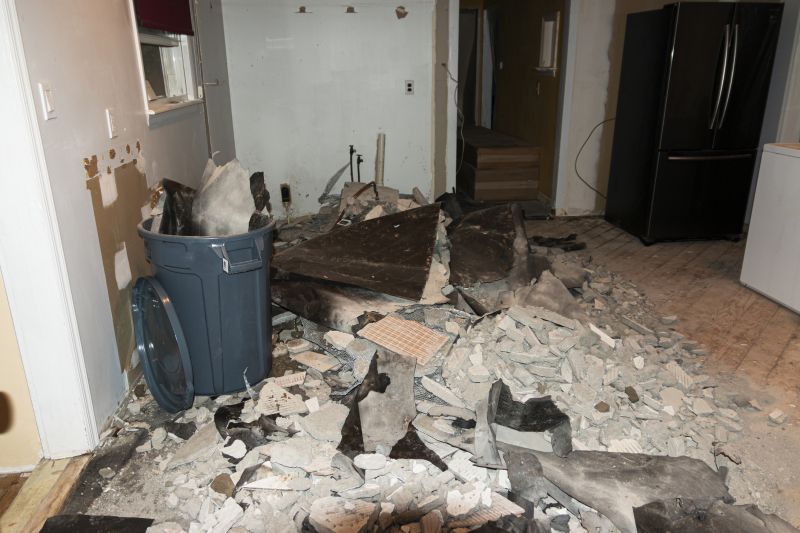Favorite Fire Restoration Equipment For Efficient Damage Control
Select from highly regarded equipment designed to streamline fire damage control and restore properties efficiently.
 Fire restoration products are essential tools and materials used in the process of repairing and restoring properties affected by fire damage. These products help mitigate smoke and soot residues, remove odors, and repair structural damage caused by flames and heat. Proper selection and application of these products can significantly influence the efficiency and effectiveness of the restoration process. In Panama City, FL, professionals and property owners alike rely on a variety of specialized items to ensure thorough cleanup and restoration.
Fire restoration products are essential tools and materials used in the process of repairing and restoring properties affected by fire damage. These products help mitigate smoke and soot residues, remove odors, and repair structural damage caused by flames and heat. Proper selection and application of these products can significantly influence the efficiency and effectiveness of the restoration process. In Panama City, FL, professionals and property owners alike rely on a variety of specialized items to ensure thorough cleanup and restoration.
Top Overall Option
Comprehensive Fire Damage Restoration Kit
A well-rounded fire damage restoration kit typically includes a variety of cleaning agents, odor neutralizers, soot sponges, and protective gear. These kits are designed to provide a complete set of tools for addressing multiple aspects of fire damage, making them suitable for both professional restorers and serious DIY enthusiasts. They facilitate thorough cleaning, deodorizing, and surface preparation, helping to restore affected areas efficiently and safely.
Types of Products For Fire Restorations
Soot and Smoke Cleaning Solutions
Specialized cleaners formulated to break down soot and smoke residues on various surfaces.
Odor Neutralizers and Eliminators
Products designed to eliminate persistent smoke odors from indoor environments.
Soot Sponges and Erasers
Non-abrasive tools for removing soot from walls, ceilings, and other surfaces.
Fire-Resistant Sealants and Primers
Materials used to seal surfaces and prevent odor seepage or future damage.
Dehumidifiers and Air Scrubbers
Equipment to control moisture and improve air quality during restoration.
Protective Clothing and Gear
Personal protective equipment such as masks, gloves, and suits for safety during cleanup.
Structural Repair Materials
Patching compounds, drywall, and reinforcement products for rebuilding damaged structures.
Electrostatic and HEPA Vacuum Cleaners
Specialized vacuums for removing soot and ash particles from surfaces and air.
Water and Fire Damage Drying Equipment
Tools to remove excess moisture after firefighting efforts.
Chemical Deodorizing Gels and Sprays
Odor-absorbing products that help freshen indoor spaces after a fire.
Fireproofing and Heat-Resistant Coatings
Protective coatings to prevent future damage or enhance safety.
Cleaning Wipes and Cloths
Disposable cleaning materials for quick soot and residue removal.
Electrostatic Sprayers
Equipment for even distribution of disinfectants and deodorants.
Popular Choices
Versatile cleaning solutions suitable for various surfaces affected by fire.
Products designed for quick application to neutralize smoke odors.
Handheld tools for manual soot extraction from walls and ceilings.
Devices that improve indoor air quality by capturing fine soot and ash particles.
Sprays used to seal porous surfaces and contain odors.
Durable cloths for wiping down soot and residues.
Equipment to reduce moisture and prevent mold growth after fire suppression.
Gels placed in affected areas to absorb lingering smoke smells.
Tools for applying disinfectants evenly across surfaces.
Protective gloves designed for handling soot and chemicals safely.
Equipment to ventilate and dry out fire-affected spaces.
Powders that can be applied to surfaces to absorb odors and residues.
Materials for repairing walls and ceilings damaged by fire.
Protective coatings to enhance fire resistance of surfaces.
Fire damage restoration involves multiple steps, including cleaning soot and smoke residues, deodorizing affected areas, and repairing structural elements. Products such as cleaning agents, odor neutralizers, and sealants are commonly used to address these needs. The right combination of products can help restore a property to its pre-fire condition, minimizing long-term damage and health risks associated with residual smoke and soot.
Choosing the appropriate fire restoration products requires understanding the specific needs of a damaged property, including the extent of soot buildup, odor severity, and structural compromise. Quality tools and chemicals designed for fire damage cleanup can facilitate a safer, more efficient process. It is important to follow manufacturer instructions carefully to ensure optimal results and safety during restoration efforts.
Whether for professional restoration companies or DIY homeowners, having access to a broad range of fire restoration products can make the difference in achieving a thorough and effective cleanup. From heavy-duty cleaning solutions to specialized odor eliminators, the right products are vital for tackling the unique challenges posed by fire damage. Properly selected and applied, these products support the goal of restoring safety, comfort, and property value after a fire incident.
Key Buying Considerations
- Assess the extent of soot and smoke damage to determine the necessary cleaning products.
- Consider the types of surfaces affected and select appropriate cleaners and sealants.
- Prioritize products with clear instructions for safe and effective use.
- Ensure compatibility of odor neutralizers with the affected materials.
- Evaluate the need for protective gear and safety equipment during cleanup.
- Choose equipment like air scrubbers and dehumidifiers based on space size and damage severity.
- Look for versatile products that can address multiple issues simultaneously, such as cleaning and deodorizing.
- Check for product certifications or standards that ensure quality and safety.
- Consider environmental conditions like humidity and ventilation when selecting drying and deodorizing tools.
- Plan for structural repairs with suitable patching and reinforcement materials.
- Invest in reliable cleaning tools such as HEPA vacuums for thorough soot removal.
- Determine if specialized products are needed for sensitive or delicate surfaces.
- Factor in the timeline for restoration and select products that facilitate quick, effective results.
- Review customer feedback and product ratings for insights into real-world performance.
